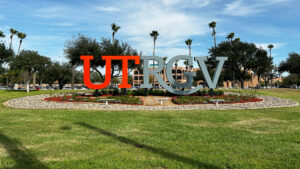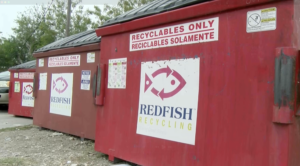SANTA MONICA – A new data center is under construction in the northeastern Rio Grande Valley region and is expected to bring new jobs and economic growth to the region.
Soluna is the company behind Project Kati, and according to its website it aims to turn stranded renewable energy into computing solutions for AI and Bitcoin.
Dipul Patel, Soluna chief technology officer, said the company is focused on hiring local people, with 80% of the jobs in the project being on site.
“Most of the other jobs are on-site electricians, you know, data center technicians, networking, you know, engineers and network technicians. So, you really need technicians for a lot of the different roles,” Patel said.
Data centers hold computer systems that host online services, such as servers for companies like Facebook and Microsoft.
Reynaldo Anzaldua, Department of Informatics and Engineering Systems professor, recalled his time experiencing the growth of Silicon Valley and said it’s similar to what the RGV is now seeing.
Anzaldua said this data center could increase the visibility of the region within the tech industry.
“So, like anything else, once you start developing clusters of data centers in places, you will bring in the supporting industries to those things,” Anzaldua said.
Patel said Project Kati will be divided into two phases, with the first one being a cryptocurrency miner.
The Financial Industry Regulatory Authority states cryptocurrency miners are computers that, through complex calculations, generate digital currency through a process called “mining.”
The data center will host several of these miners, which were shipped to the site by its corporate owners, Galaxy.
The second phase will be a high-performance computing center for AI operations.
Anzaldua explained there is currently a big push in the industry toward these projects.
“AI is rapidly becoming the thing that everybody wants to be on top of,” Anzaldua said. “So, those particular data centers, they normally have higher power computers.”
Anzaldua shared a common concern with data centers is its environmental impact, as data centers typically consume a lot of power from the energy grid and local water.
Patel said the cryptocurrency part of the project will use traditional air cooling, while the AI part will use a closed-loop water system.
Anzaldua said closed-loop systems do not consume much water like traditional water-cooling systems, only replacing the liquid as needed and not continuously.
The liquid for the cooling is set to be ethylene glycol water, which will be shipped to the site and not sourced locally.
The National Library of Medicine states, ethylene glycol is used to make anti-freeze for cars.
The center’s energy will be sourced from the wind farms in the region. Patel said Willacy County was the chosen location for this very reason.
The data center is set to start mining cryptocurrency early next year.





